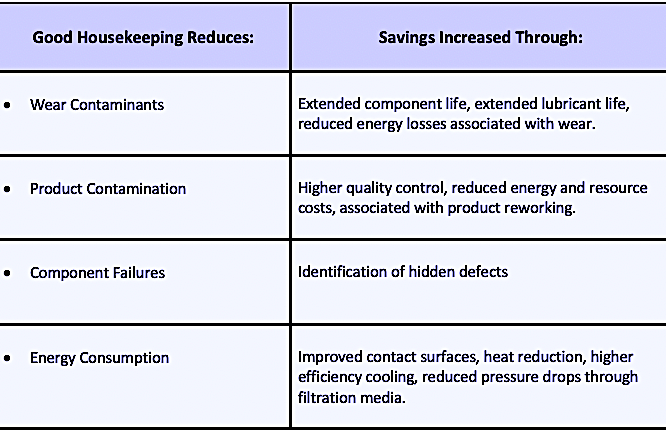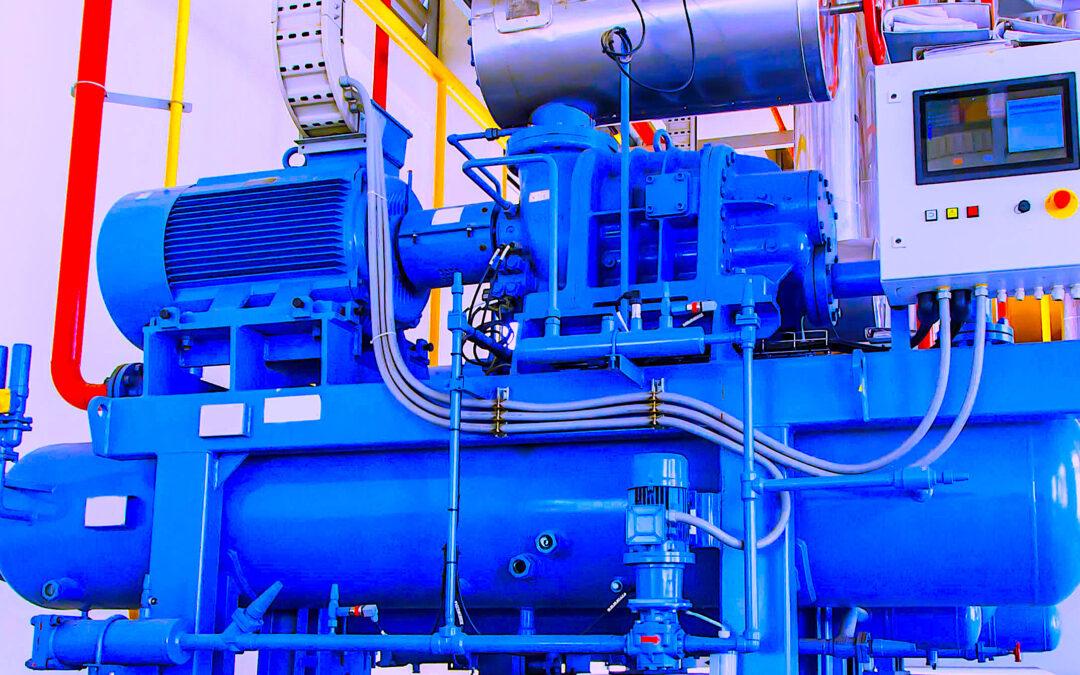When confronted with performing maintenance on a newly purchased and installed machine versus an older machine covered in production swarf, oil, grease, dirt, water, and accumulated grime, on which would you prefer to work?
Good housekeeping is an essential and highly economical component of any maintenance-improvement initiative. And it’s crucial when looking to:
♦ increase safety
♦ cut energy costs
♦ facilitate maintenance troubleshooting
♦ increase quality control
♦ boost asset reliability and availability
♦ reduce maintenance.
Interestingly, housekeeping/equipment cleanliness is prescribed as a crucial element toward facilitation of quality maintenance and increased production output/efficiency in Reliability Centered Maintenance (RCM) and Total Productive Maintenance (TPM) maintenance philosophy/methodologies.
UNDERSTAND THE PROBLEM
When equipment is cleaned, machine inspection and component inspection occur simultaneously. If you’ve ever hand-washed a vehicle, you will, no doubt, have easily noted minor dings and/or other conditions. The same holds true for industrial equipment. Problem-recognition at an early stage allows time to perform a simple repair/calibration before a minor issue is allowed to manifest into an energy drain and/or major shutdown failure.
Housekeeping simply removes contamination buildup. (To deal with contamination at the source, click here to read to my June 5, 2021, article, “Eliminate Contamination: A Two-Part Strategy.”) Dirt accumulating on a machine’s mechanical and electrical surfaces can rapidly, and unnecessarily, increase operational energy costs. Deposited on electrical contacts, dirt will generate heat that can lead to a variety of energy-related issues:
1. Dirty contactor tips cause improper contact that can result in increased electrical current draw.
2. Dirty magnet faces can cause relays to chatter.
3. Dirt on arc shields, e., components that dampen the arc created when a contactor is opened under load
and prevents the tips from burning, causes a shield to flash over and become inoperable.
4. Dirty or clogged air vents cause electrical components to overheat.
5. Dirty electrical cabinet filters lead to reduced circulation and an increase in cabinet ambient temperature.
Poor housekeeping can also cause losses in other areas. If, for example, dirt is allowed to accumulate on heat exchangers, reservoirs, motors, and other equipment systems, it creates “thermal blankets.” A thermal blanket acts as an insulator, resulting in poor heat exchange and reduced thermal efficiency. In the case of lubrication reservoirs, dirt buildup can cause the lubricant temperature to rise, reducing viscosity and lubricant protection/life. On electrical motors, dirt can cause poor cooling, unnecessarily raising the operating temperature of the motor.
Heating, ventilating, and air-conditioning (HVAC) filters require changing on a regular basis, in accordance with their ambient working conditions. For example, ambient air in a foundry would be dirtier than ambient air in a pharmaceutical company. When filters become clogged or contaminated, they restrict airflow. With restricted cooling or process air, equipment is less efficient and more energy demanding.
As shown below in Table I, incorporating cleaning as part of the inspection process can generate multiple savings, in different areas.

Table I. Good Housekeeping Produces Savings.
(Source: Energy Reduction Through Improved Maintenance Practices,
Kenneth E. Bannister, Industrial Press, NY, 1999, ISBN 0-8311-3082-2.)
BOTTOM LINE
Industrial housekeeping, as modest as it sounds, is a tier-one contributor to asset reliability, availability, and energy efficiency. Yet, this inexpensive and highly effective strategy is often ignored as Maintenance and Operations argue over who bears responsibility for keeping machinery and surrounding areas clean.
If you haven’t already done so, perhaps it’s time for Maintenance to meet with Operations to implement a solid 2021 Housekeeping Strategy. Within weeks, the result will be clean machines that are welcoming, more efficient, and easier to maintain and operate.TRR
ABOUT THE AUTHOR
Ken Bannister has 40+ years of experience in the RAM industry. For the past 30, he’s been a Managing Partner and Principal Asset Management Consultant with Engtech industries Inc., where he has specialized in helping clients implement best-practice asset-management programs worldwide. A founding member and past director of the Plant Engineering and Maintenance Association of Canada, he is the author of several books, including three on lubrication, one on predictive maintenance, and one on energy reduction strategies, and is currently writing one on planning and scheduling. Contact him directly at 519-469-9173 or [email protected].
Tags: reliability, availability, maintenance, RAM, energy efficiency, safety, maintenance troubleshooting, lubrication, contamination control, quality control, workforce issues



